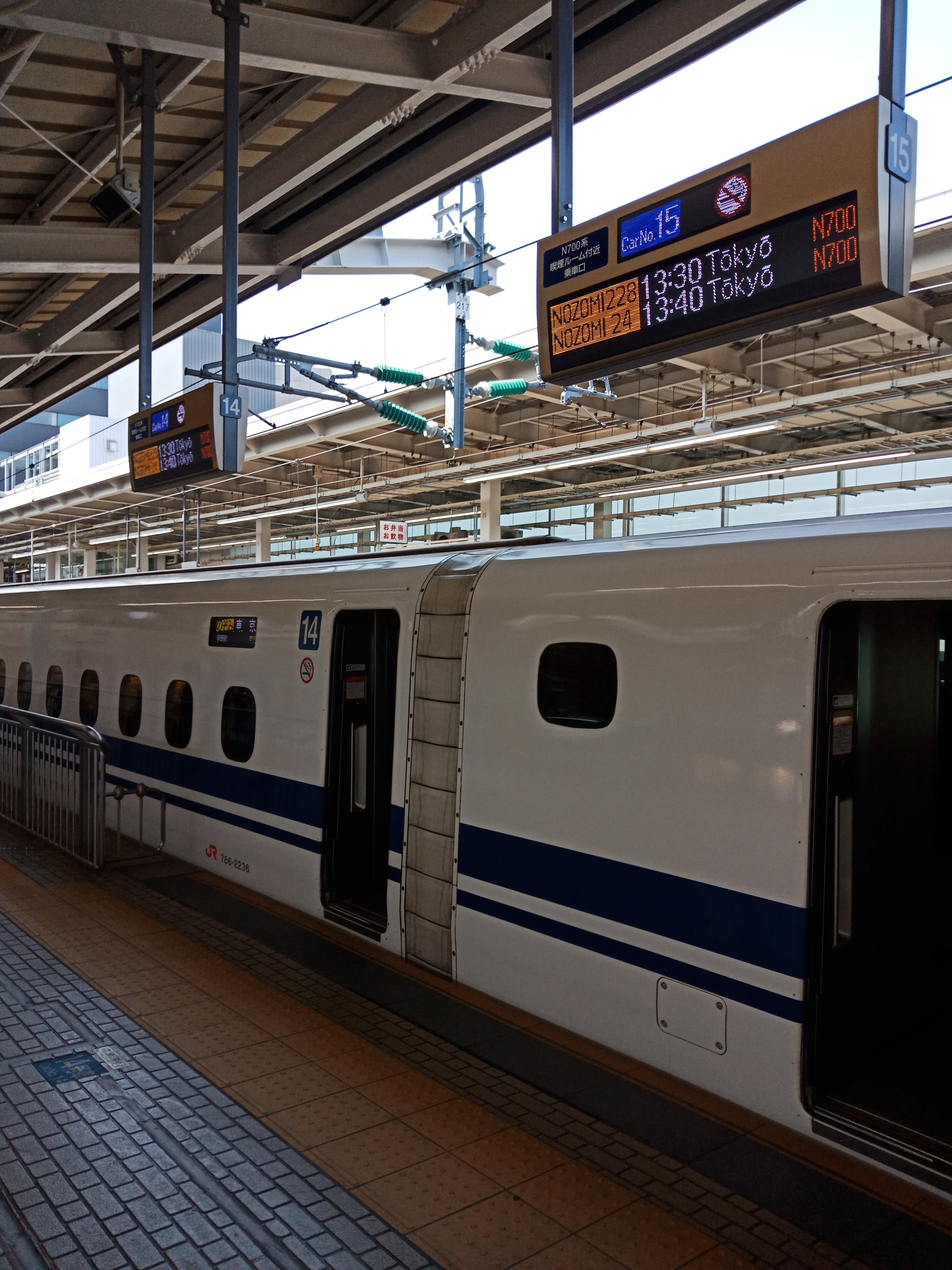
The Shinkansen train takes you from Osaka to Kyoto, a distance of 47km, in 13 minutes flat. This is the future, this is Star Trek. Anyone who doesn’t get excited by this is just dead inside, lifeless. This is the future, this is Star Trek. This is what you dreamed of as a kid. The next step is to go into space. I feel like calling Mam – she’s always wondering what it would be like.
“It’d be too fast to see anything anyway. Probably no point looking out the window.”
She tries to temper her curiosity with the vaguely logical and dismissive assumption of someone telling themselves that “I didn’t really want to do it anyway.” But she’s dying to know. We all are. And it’s fantastic.
Looking out the window for too long makes my head hurt though, and you must accept that the novelty of anything has worn off when you fall asleep during it, as I always do on public transport, as I do here after an hour of excitement. Maybe I tuckered myself out like an over-enthusiastic kid.
Following the flashing blue icon on Google Maps as it moves improbably fast across the landmass of Japan is also exciting, for a bit, but you might as well be watching the number of likes go up on a Facebook post, really. Not actually interesting, not like looking out the window of your own spaceship seeing distant mountain ranges, patterns of local architecture from the prime and unique angle afforded by trains everywhere, or ruminating on the thoughts and life and hopes and dreams of a man you see fishing by a river.
The train teases as we leave Shin-Osaka Station. I’m waiting for it to hit warp-speed but we smoothly accelerate and decelerate for a time until we reach clear countryside, like the driver is just warming up. It feels like he’s holding back, keeping to some sort of speed limit, as the effortlessness of the train gives the impression that the technology could do more if pushed. In the end it goes fast enough. We get from Osaka to Tokyo in a little over 3 hours, including several stops. That’s 550km, or roughly the distance from the Giant’s Causeway to the Ring of Kerry. There is another sense of excitement that comes when you step off the train knowing you’ve gone so far in so little time, similar to getting off an airplane in a land, a climate and a time-zone noticeably different to the one you left.
By the time I get off the train at my destination in a rural part of Chiba prefecture to the south-east of Tokyo, I’ve travelled all the way from my hostel in downtown Osaka to the Pacific Coast through a series of stations, subways and trains of varying sizes and speeds. Thankfully now I’m in the countryside, and I can taste the fresh night air when I leave the train station. Looking out the window there was very little of the rail route that doesn’t pass through urban landscape. The development of the Shinkansen network – first opened in 1964 – was done to support the flow of an ever-expanding population into Tokyo, and now almost anywhere serviced by it serves as a commuter suburb to the monstrosity of a capital city. Japan has a similar land area to Germany with a 50% greater population, and travelling between cities here you realise just how this country’s notorious technological planning and efficiency has worked over the years to squeeze everybody into that space (most of the population also lives on the main island of Honshu, with roughly the same landmass area as the UK).
The whole system slots together seamlessly and you can make your way from one end of the country to the other without seeing much of anything that wasn’t invented in the last 50 years. There is another sense of wonder that comes with navigating Japan like this, like an action figure on a conveyor belt being bounced along from one end of a Lego set to another – “doo-dee-doo-dee-doo”. It’s exciting and headache-inducing at the same time.
Aside from the bullet train, everywhere in the country is connected by a train of some sort, everything from large national train companies to quaint local services like the Enoshima Electric Railway in services Kamakura to Enoshima, beachside cities to the south-west of Tokyo. The cute vintage carriages trundle through backyards and sleepy suburbs, close enough to touch the well-kept gardens and tiny independent shops and craft food stores and cafes. Like everything in this country, it appears as a work of art, something that exists and is well-made and beautiful for its own sake. Waiting at the tidy automated barriers or walking over sections of track that run unobstructed over the quiet back streets adds to the peaceful air, makes you feel like you’re immersed in your own model railway. Every journey is pleasant, a jaunty little bit of Sunday recreation. It’s enough to make you forget that it’s still transporting people to work like all the other trains.